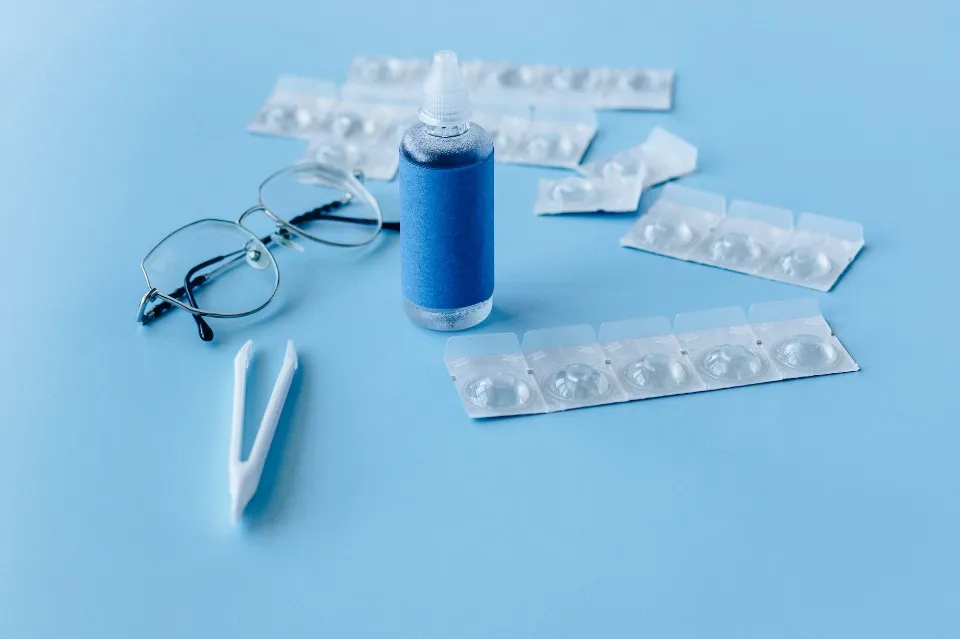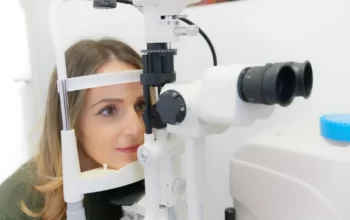
How often should I replace my contacts? This is a very typical query, especially if you’re a new contact lens wearer.
Every two weeks, disposable lenses must be changed. Weekly contacts should ideally only be worn for fourteen days at a time, though some brands extend the wear time by an additional week.
However, the answer has become more confusing over time as more and more types of contacts have become available. Some contacts are replaced once every two weeks, some are replaced every month, and some are even replaced daily! Knowing how long your contacts will last will help you take good care of them and maintain the health of your eyes.
How Often Should I Change My Contacts?

First, check the product you were prescribed by your optometrist if you’re wondering, “How often should I replace my contacts?” The manufacturer should have provided a “recommended usage,” which will help you know how long your contacts should last. Don’t be afraid to ask your optometrist for assistance if you can’t find this information.
The Basics
Even contact lenses with perfect maintenance must be changed frequently. Protein deposits and contamination may accumulate on the surface of contact lenses if they are not changed frequently enough, raising your risk of getting an eye infection. Most people use soft contacts, which are especially susceptible to deposits and contamination. The time between replacements for gas permeable contact lenses can be up to a year.
The recommended wear schedule is for a maximum of time, so keep that in mind. So if your contact lens is beginning to irritate your eye or you notice a tear before you’ve reached the end of the wear schedule, throw the lens out and open up a new lens. Always prioritize your eye health.
The Lifespan of Contact Lenses
When it comes to lifespan, there are five general types of contact lenses:
- Daily Disposable: After one day of use, daily disposable contacts are replaced.
- Disposable: Disposable contacts are replaced after two weeks of wear.
- Traditional: The monthly or quarterly replacement of conventional contacts.
- Gas Permeable/Scleral: Gas permeable lenses have a long lifespan with proper care. Scleral lenses are very similar, but they go over the cornea to avoid irregular astigmatism levels.
Americans who wear soft contacts account for about 40% of those who are prescribed monthly lenses, 35% who wear contacts every day, and 24% who use lenses that need to be changed every one to two weeks. Only 1% of people wear contact lenses that can be changed every year.
Why It’s Important to Stick to Your Replacement Schedule
We are aware of how simple it is to overlook contact lens replacement needs. If contacts aren’t showing signs of wear and tear, it can be tempting for some people to wear them after their expiration date. Although it’s risky to wear your contacts past their expiration date, make sure to note the date on your calendar or add a reminder to your phone. Maintain your replacement schedule even if your contacts don’t feel uncomfortable or your vision isn’t foggy. In addition, even if you didn’t wear your contacts for the full use period (let’s say you opened up 30-day contacts, wore them once, and then wore your glasses for a week), you should still replace your contacts 30 days after you first used them.
If you don’t replace them, the oxygen that can reach your eyes will be lowered as your contacts gather protein buildup and contamination over time. This will make your eyes more prone to a variety of issues, including irritation, infections, blood vessel growth, and inflammation. These signs and symptoms may eventually result in an inability to wear contact lenses, irreversible eye damage, or even vision loss.
Sleeping in your contacts is also quite dangerous if your lenses are not designed for overnight use. Don’t worry about it if it only occurs once. But if you frequently wear your contacts for longer than they’re designed to be worn, you might experience minor side effects like discomfort or red eye or more serious health issues like corneal hypoxia, which can result in a corneal ulcer. This could, in rare instances, even result in a serious infection.
Disposable Lenses
Daily Contact Lenses
Daily disposables should be thrown away after one use, as the name implies. These lenses don’t require a case or cleaning solution; simply throw them in the trash when they’re done wearing them. Daily disposable contact lenses don’t require any maintenance and maintain optimal eye health because they can’t degrade over time from repeated use. This is why some people prefer them.
Fortnightly Contact Lenses
Although some brands add an extra week, weekly contacts should not be worn for more than fourteen days. Remove your contacts every night, clean them properly, and ensure your storage case contains fresh solution to treat each contact – dirty contacts lead to sore, irritated eyes.
Monthly Contact Lenses
These lenses last four weeks of daily wear, making them ideal for those who are environmentally conscious. Reliable daily treatment and cleaning are required if you want them to last longer than the fortnightly or single use varieties.
Types of Lenses

RGP Lenses
Rigid gas-permeable lenses are the best for people who wear contacts from morning until night, every day, despite the fact that they require some getting used to (they rank slightly below soft disposable lenses on the comfort meter). Resilient and long-lasting, many of our customers benefit from sharper vision after a custom contact lens fitting – not every lens is designed to fit your eye. To learn more, contact our eye specialists right away!
The Secret to a Fast, Effective Lens Change…
No matter what kind of lens you end up putting in your eyes, every single one will benefit from having clean hands. The negative effects of lotions, perfumes, dirt, grime, and oil on your lenses can cause blurred vision, itchy eyes, or even mild irritation. Because a stray fingernail can cause serious harm to your eyes and your lenses during application and removal if caution isn’t used, we advise keeping your nails short with smooth, round edges.
What If Your Technique Suffers from Uncertainty?
Like any skill, inserting and removing contact lenses requires time, practice, and the proper technique from the start if you don’t want to give up and abandon them. But what options are there besides Google or YouTube? Before patients leave, Custom Eyecare makes sure they comprehend the how, why, and maintenance requirements of contact lenses. If you’re having problems with your lenses, let one of our eye specialists know and we’ll quickly answer any questions with solid training.
Keep in mind that online advice cannot match the knowledge of an authority on eye health. Contact Custom Eye Care as soon as possible if you have any questions about your prescription or if you have any concerns about your contacts wearing out. We’re here to make sure your eyes stay healthy so you can stay happy.
Conclusion
Although they need to be properly cared for, contact lenses are a great alternative to glasses. Follow your optometrist’s instructions and keep your contacts clean to achieve this.
If you feel discomfort or irritation, stop wearing your contact lenses and get an appointment with your optometrist as soon as you can. Make an appointment if you exhibit symptoms of GPC or another eye-related issue.
FAQs
How Frequently Should I Change My Contact Lens?
The goal of a disposable pair is to be discarded at least twice per week. Every 1-3 months, lenses that require frequent replacement should be changed. You can switch traditional reusable contact lenses around twice yearly, or every 6 months.
How Long Should a Pair of Contacts Last?
How long your contacts should last is also influenced by the type of lens. The recommended frequency of replacement for daily wear lenses is either daily, weekly to biweekly, or monthly. Extended-wear lenses are less frequently prescribed, but they may last up to a full month before needing to be changed.
Do Contacts Get Blurry over Time?
People who wear contacts frequently wear them longer than advised, which can result in protein deposits accumulating on the lenses. These protein buildups have the potential to seriously harm the health of the eyes in addition to impairing vision.



